Kutani figurines

|
Fudo Myo-O is a Japanese deity (also know as Acala), the God of Fire, a manifestation of the central sun (Vairocana), a fierce God of Indian origin although neither a Buddha or Bodhisattva. A male, he is usually portrayed as livid blue in color with a terrible facial expression sitting on a rock surrounded by flames, gripping a sword in the right hand, a rope in the left, teeth bared and with angry eyes. The deity symbolizes the mind that does not move, or the body that is not unsettled even when surrounded by danger. The deity was popular with the Japanese warriors (bushi or samurai) who saw themselves as guardians of order in a nation besieged with disorder. | |
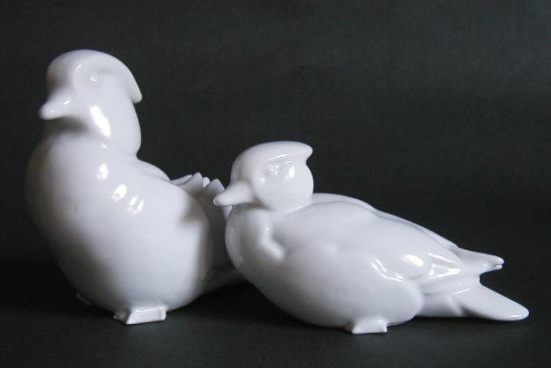
|
A pair of Mandarin ducks is often given as mariage present. They will bring fidelity and happy long life. | |
十二支 |
The twelve zodiacal signs. Ne = Rat, Ushi = Ox, Tora = Tiger, U = Hare ,Tatsu = Dragon, Mi = Snake, Uma = Horse, Hitsuji = Sheep, Saru = Monkey, Tori = Cock, Inu = Dog, I = Boar. | |
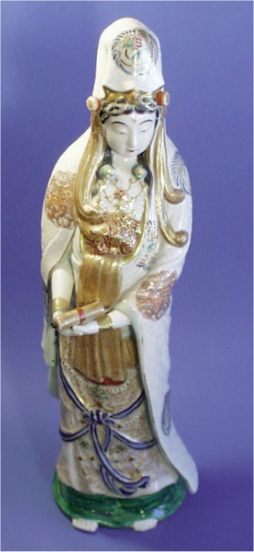
|
Kannon, the Goddess of Mercy is also quite often found in the figurine. The Bodhisattva Kannon is one of the most popular Buddhist goddess in Japan and China. In Buddhism a Bodhisattva is someone who has achieved six of ten perfections through previous lives, and is approaching actual Buddahood. Bodhisattvas chose to remain in the world in order to help and protect humanity. Kannon has appeared long throughout the history of Japanese Art. | |
達磨 |
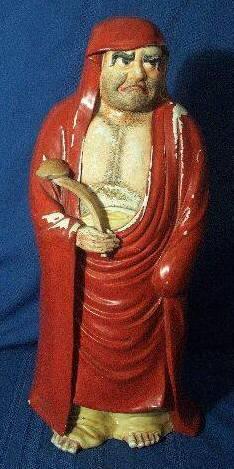
|
Daruma is the Japanese name of Dharma. He is considered as the father of the Zen buddhism. Daruma dolls are generally hollow figurines with red color. These dolls are considered as toys and bring good luck. It is a popular gift in Japan. |
唐獅子 |
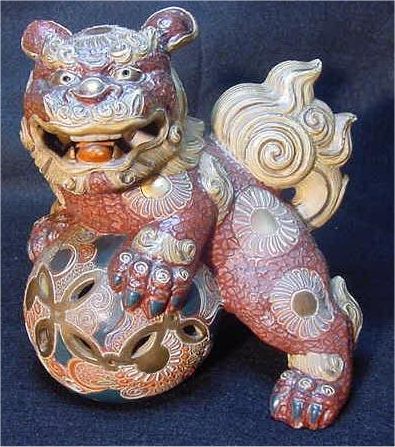
|
Japanese Lions are called Karajishi. They found their origin in China during Tang Dynasty. At that time people had not generally seen lions and they could only imagine a terrible animal. Karajishi is believed to be born from a dragon. Karajishi is placed at the entrance of a home to protect against devils and bring good luck. A lion with its paw resting on a ball is a male, whereas the female protects a cub with its foreleg. |
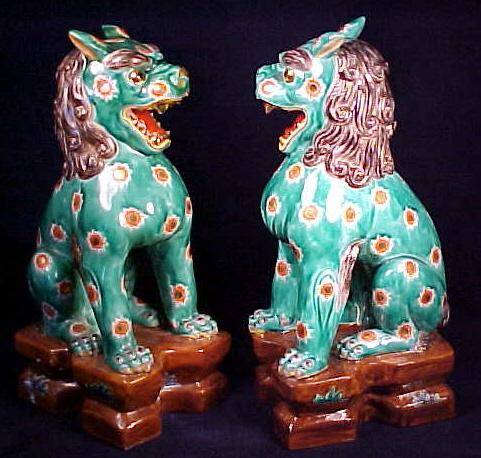
|
Japanese Koma Inu (狛犬) often called lion-dogs in English, are statue pairs of lion-like creatures either guarding the entrance of many Japanese Shinto shrines. They can be found also at Buddhist temples, nobility residences or even private homes. | |
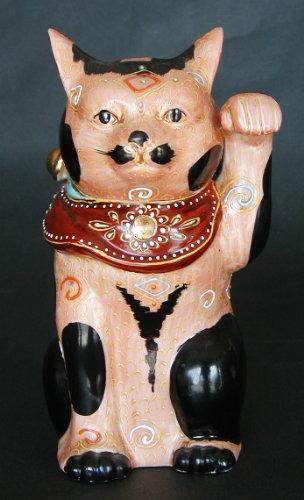
|
Porcelain Maneki Neko is very popular in Japan. If Neko has the right paw up, he brings luck, in the case of the left paw he brings money to the house. | |

|
This is one of the oldest legend of Japan and was played in a Noh play The man’s name is Jo and wife is Uba and as a couple they are called Jotomba.. They symbolize long life and happiness with Jo raking in the good and Uba sweeping out the bad.. This pair is quite beloved in Japan and often given as wedding gifts, celebrations and new year. | |

|
This is a representation of Otafuku or Okame, the goddess of the theater. | |
The old man |

|
Okina In the legend of Shinto, god appears often as an old man. It is often represented this way especially in Noh theater. Okina is the title of a Noh play |
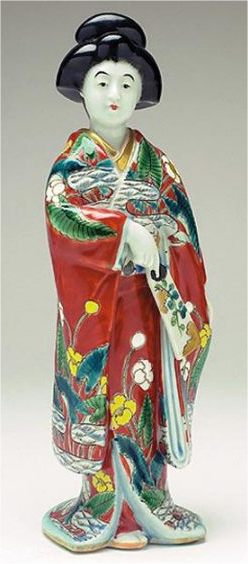
|
Bijin, represents a beautiful women. It goes back to the early 19 century when ukyoe artists were publishing prints of beautiful Geisha - Utamaro is one of the most famous artist. | |
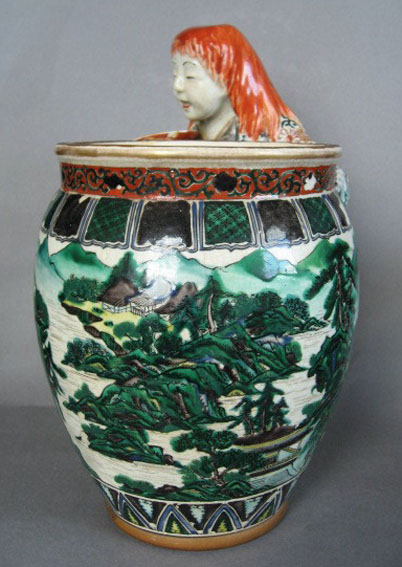
|
Shojo, in Japanese mythology, refers to a sea spirit with red face and hair and a fondness for alcohol. | |
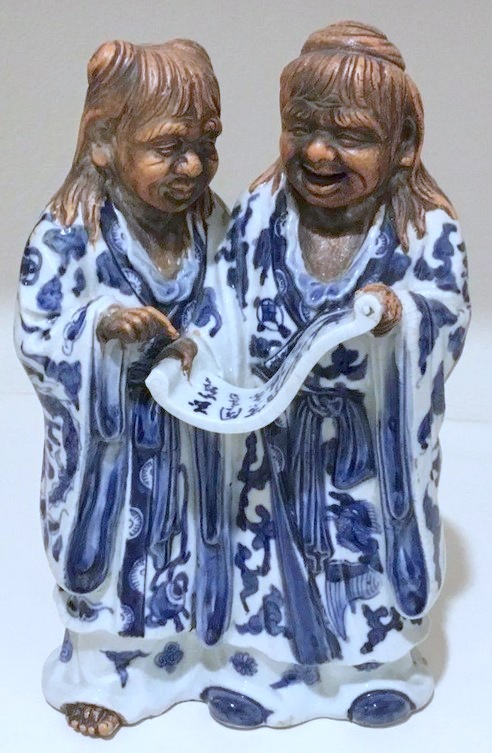
|
Kanzan and Jittoku, (Chinese : Hanshan and Shide) are popular figures in Zen painting. Kanzan, is believed to be an eccentric Zen poet from the Tang Dynasty (618–907) who lived on the Tiantang Mountain in Zhejiang Province. Jittoku, was a kitchen worker at the nearby Guoqing Temple. He is said to have been abandoned by his family, and then found and raised by Fenggan, another Zen eccentric. As legend goes, the two formed a close friendship, with Jittoku stealing scraps from the kitchen to bring to Kanzan, and the pair spending time in nature, away from societal structure and institutions. Kanzan and Jittoku are almost always depicted wearing scrappy and ratty clothing, appearing disheveled, wandering in nature, laughing, or with mischievous looks on their faces. Kanzan is identified by the scroll he holds in his hand, alluding to his work as a poet. Jittoku is identified by the broom he holds, which references his work as a kitchen cleaner at the monastery. |
Photos are courtesy of the owners of the figurines. Their names can be found in the database under the different categories.







